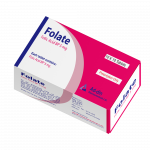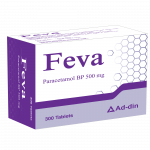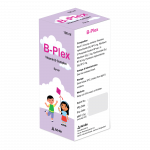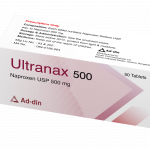Composition
Each vial contains sterile Ceftriaxone Sodium USP equivalent to 2 g Ceftriaxone and each of 2 ampoules contains 10 ml sterilised Water for Injection BP.
Pharmacology
Newxone (Ceftriaxone) is a 3rd generation broad-spectrum parenteral cephalosporin antibiotics. It has potent bactericidal activity against a wide range of Gram-positive and Gram-negative organisms. Like other cephalosporins and penicillins, Newxone (Ceftriaxone) kills bacteria by interfering with the synthesis of the bacterial cell wall. Newxone (Ceftriaxone) has a high degree of stability in the presence of beta lactamases. A remarkable feature of Newxone (Ceftriaxone) is relatively long plasma elimination half-life of about 6 to 9 hours, which makes single or once-daily dosage of the drug appropriate for most patients. Newxone (Ceftriaxone) is not metabolized in the body. About 40-65% of a dose of Newxone (Ceftriaxone) is excreted unchanged in the urine; the remainder is excreted in the bile and ultimately found in the feces as unchanged drug and microbiologically inactive compound. The drug is highly protein bound (95%).
Indication
Newxone (Ceftriaxone) is indicated for the treatment of the following major infections when caused by susceptible organisms: renal and urinary tract infections, lower respiratory tract infections, particularly pneumonia, gonococcal infections, skin and soft tissue infections, bone and joint infections, bacterial meningitis, serious bacterial infections e.g. septicemia, ENT infections, infections in cancer patients, prevention of postoperative infections, perioperative prophylaxis of infections associated with surgery, typhoid fever.
Dosage & Administration
Adult: The usual dose is 1 g to 2 g by intravenous administration once a day (or in equally divided doses twice a day)
Pneumonia, bronchitis, acute bacterial otitis media, skin and skin structure infections, urinary tract infections, bacterial septicemia, bone and joint infections, meningitis: 1 g to 2 g IV once a day (or in equally divided doses twice a day); maximum dose: 4 g/day
Uncomplicated gonococcal infections: 250 mg IV as a single dose
Surgical prophylaxis: 1 g IV as a single dose 30 to 120 minutes before surgery
Infants and Children (01 month or older): The usual dose is 50 to 75 mg/kg intravenous administration once a day (or in equally divided doses twice a day)
Pneumonia, bronchitis, skin and skin structure infections, urinary tract infections, bacterial septicemia, bone and joint infections: 50 to 75 mg/kg IV once a day (or in equally divided doses twice a day); Maximum dose: 2 g/day
Acute bacterial otitis media: 50 mg/kg IV in single dose; Maximum dose: 1 g/day
Meningitis: 100 mg/kg IV in single daily dose or (or in equally divided doses twice a day); Maximum dose: 4 g/day
Duration of therapy: Continue for more than 2 days after signs and symptoms of infection have disappeared. Usual duration is 4 to 14 days; in complicated infections, longer therapy may be required.
Method of Administration
As a general rule the solutions should be used immediately after preparation. Reconstituted solutions retain their physical and chemical stability for six hours at room temperature (or 24 hours at 5ºC).
Intravenous Injection: For IV injection, Newxone 1 g is dissolved in 10 ml & Newxone 2 g is dissolved in 20 ml sterile water for injections and then administered by IV injection lasting for 2-4 minutes.
Examine the patient’s tolerance to Newxone (Ceftriaxone) by giving test dose prior to administration.
Contraindication
Ceftriaxone is contraindicated in patients with known hypersensitivity to the cephalosporin class of antibiotics. In patients hypersensitive to penicillin, the possibility of allergic cross-reactions should be borne in mind. Although the relevant preclinical investigations revealed neither mutagenic nor teratogenic effects. Ceftriaxone should not be used in pregnancy (particularly in the first trimester) unless absolutely indicated.
Warning and Precaution
As with other Cephalosporins, anaphylactic shock cannot be ruled out even if a thorough patient history is taken. Anaphylactic shock requires immediate countermeasures such as intravenous epinephrine followed by a glucocorticoid.
In rare cases, Shadows Suggesting Sludge have been detected by sonograms of the gallbladder. This condition was reversible on discontinuation or completion of ceftriaxone therapy. Even if such findings are associated with pain, conservative, nonsurgical management is recommended. In-vitro studies have shown that ceftriaxone, like some other cephalosporins, can displace bilirubin from serum albumin. Cautions should be exercised when considering ceftriaxone for hyperbilirubinemic neonates, especially premature. During prolonged treatment the blood picture should be checked at regular intervals.
Side Effects
Ceftriaxone is generally well tolerated. A few side-effects such as Gastrointestinal effects: diarrhea, nausea and vomiting, stomatitis and glossitis; Cutaneous reactions: rash, pruritus, urticaria, edema & erythema multiforme; Hematological reactions: eosinophilia, thrombocytosis, leukopenia, and neutropenia; Hepatic reactions: elevations of SGOT or SGPT, bilirubinemia; CNS reactions: headache, hyperactivity, nervousness, sleep disturbances, confusion, and dizziness were reported. Local phlebitis occurs rarely following intravenous administration but can be minimized by slow injections over 2-4 minutes.
Use in Pregnancy & Lactation
Its safety in human pregnancy has not been established. Therefore, it should not be used in pregnancy unless absolutely indicated. Low concentrations of Ceftriaxone are excreted in human milk. Caution should be exercised when Ceftriaxone is administered to a lactating mother.
Drug Interaction
- a) With Medicine: No impairment of renal function has so far been observed after concurrent administration of large doses of Ceftriaxone and potent diuretics (e.g. furosemide). There is no evidence that Ceftriaxone increases renal toxicity of aminoglycosides. No effect similar to that of disulfiram has been demonstrated after ingestion of alcohol subsequent to the administration of Ceftriaxone. Ceftriaxone does not contain an N-methylthiotetrazole moiety associated with possible ethanol intolerance and bleeding problems of certain other cephalosporins. The elimination of Ceftriaxone is not altered by probenecid.
- b) With food & others: There is no evidence of interaction.
Overdose
In the case of overdose, drug concentration would not be reduced by hemodialysis or peritoneal dialysis. There is no specific antidote. Treatment of overdose should be symptomatic.
Storage
Store below 30ºC, protect from light & moisture. Keep out of the reach of children.
Packaging
Each box contains 1 vial of 2 g Ceftriaxone and 2 ampoules of 10 ml Water for Injection. It also contains a disposable syringe (20 ml), butterfly needle, alcohol pad, and first aid bandage.






